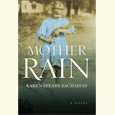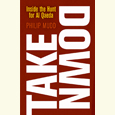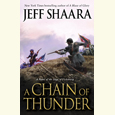Authentic Appalachia
 December 3, 2013 Karen Spears Zacharias is a veteran author of nonfiction, but her new book, Mother of Rain, is a foray into historical fiction. Set during the Depression and World War II in a close-knit community in East Tennessee, the story centers on a troubled young woman, her first baby, and their Appalachian neighbors’ good-hearted efforts to save them both.
December 3, 2013 Karen Spears Zacharias is a veteran author of nonfiction, but her new book, Mother of Rain, is a foray into historical fiction. Set during the Depression and World War II in a close-knit community in East Tennessee, the story centers on a troubled young woman, her first baby, and their Appalachian neighbors’ good-hearted efforts to save them both.
 October 31, 2013 For Red Holler: Contemporary Appalachian Literature, John Branscum and Wayne Thomas have compiled a group of stories, essays, poems, and graphic narratives from the work of twenty-three Appalachian authors. As the book’s subtitle suggests, the selections are truly contemporary, and many stretch the boundaries of traditional literary forms. They also stretch the old Appalachian stereotypes of primitive violence, poverty, and ignorance.
October 31, 2013 For Red Holler: Contemporary Appalachian Literature, John Branscum and Wayne Thomas have compiled a group of stories, essays, poems, and graphic narratives from the work of twenty-three Appalachian authors. As the book’s subtitle suggests, the selections are truly contemporary, and many stretch the boundaries of traditional literary forms. They also stretch the old Appalachian stereotypes of primitive violence, poverty, and ignorance.
 June 18, 2013 In Liminal Zones: Where Lakes End and Rivers Begin Kim Trevathan chronicles his kayak and canoe journeys upstream from flatwater, current-less lakes and reservoirs to places where rivers rise above the flooding and come alive. In this book that is both narrative and meditative, Trevathan samples rivers from Massachusetts to California to South Carolina, but he keeps returning to the rivers of Tennessee and Kentucky, his homeland.
June 18, 2013 In Liminal Zones: Where Lakes End and Rivers Begin Kim Trevathan chronicles his kayak and canoe journeys upstream from flatwater, current-less lakes and reservoirs to places where rivers rise above the flooding and come alive. In this book that is both narrative and meditative, Trevathan samples rivers from Massachusetts to California to South Carolina, but he keeps returning to the rivers of Tennessee and Kentucky, his homeland. May 22, 2013 Legions of historians have written narratives of Civil War battles bristling with footnotes and rigorous research. They would never presume to include the principal figures’ real-time thoughts or speculate about any conversations between them. Civil War novelist Jeff Shaara, on the other hand, has the freedom to invent. Though his books are also grounded in historical sources, he gives his characters life and includes richly detailed scenes, recreating the guns’ thunder, the ringing ears, the sweat mixing with dirt. Shaara will discuss A Chain of Thunder, his newest novel, on May 26, 2013, at 3 p.m. at the
May 22, 2013 Legions of historians have written narratives of Civil War battles bristling with footnotes and rigorous research. They would never presume to include the principal figures’ real-time thoughts or speculate about any conversations between them. Civil War novelist Jeff Shaara, on the other hand, has the freedom to invent. Though his books are also grounded in historical sources, he gives his characters life and includes richly detailed scenes, recreating the guns’ thunder, the ringing ears, the sweat mixing with dirt. Shaara will discuss A Chain of Thunder, his newest novel, on May 26, 2013, at 3 p.m. at the 